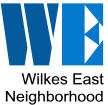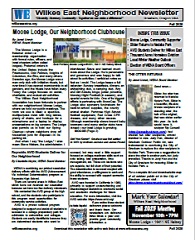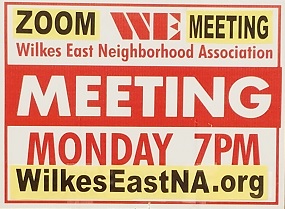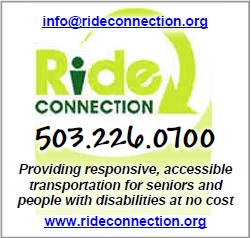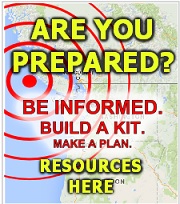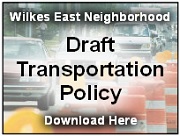By Janet Unruh, WENA Board Member
BIG PICTURE
The One Big, Beautiful Bill Act (BBB) was signed into law by President Trump on July 4, 2025. It covers a wide array of changes to laws, subsidies, and taxes. This article presents facts that have a bearing on how the BBB will affect us in Oregon, Multnomah County, and Gresham. I read parts of the BBB, but relied on articles from respected sources that were written after it became law (see Endnotes). We need to get acquainted with the facts about the BBB and its implications.
Contents
(Note: To enable the embedded Endnote[01] links below - click here)
The changes to Medicaid and the Supplemental Nutrition Assistance Program (SNAP) will negatively affect millions of Americans. SNAP will be cut by $230 billion over 10 years, according to the Congressional Budget Office (CBO)—about a 20% reduction. This is the largest cut to SNAP in history. On the national level, it will affect more than 40 million people who receive basic food assistance through SNAP, including 16 million children, 8 million seniors, and 4 million non-elderly adults with disabilities[1][2]. Medicaid will be cut by over $1 trillion over the next 10 years, and changes to federally funded health insurance programs will leave nearly 12 million people without coverage, according to an estimate from the CBO[3][4].
What about the new tax breaks, you may ask? Tax breaks are nice, but most people won’t see the benefit until sometime next year--after they do their taxes. In the meantime, things are changing for the worse. Refunds may come before the midterms—or they may not—depending on whether the IRS’s work is snarled by layoffs[5].
THE POOR IN OREGON, MULTNOMAH COUNTY, AND GRESHAM
Let’s look at the size of the population that will be affected by BBB cuts. It’s possible to find the extent of poverty and financial hardship in Oregon, Multnomah County, and Gresham. What percent of people are living in poverty--the poor? There are recent data from 2023 and 2025. According to 2023 data for the Federal Poverty Level (FPL), 12% of Oregon households were living in poverty[6][7]. However, there are an additional 30% of households in Oregon that are not identified as living in poverty, but nonetheless struggle to pay for utilities or a car repair, and are forced to decide between food or prescriptions[8].
These households are Asset-Limited, Income-Constrained, Employed—“ALICE[9]”—households with working adults whose income is above the poverty level, but who don’t earn enough to afford basic expenses in the county where they live. Between ALICE households and those living in poverty, an estimated 42% of households in Oregon were below the ALICE Threshold in 2023.
Using the ALICE website, we can focus on demographics about poverty in Gresham. Households living below the ALICE threshold in Gresham and nearby areas: 97230, 55%; 97233, 66%; 97236, 56%. 97024, 54%; 97030, 60%; and 97080, 38%[10]. Other data show the demographics of poor families in Gresham as married-couple families (34.6%); male, no wife (11.7%); and female, no husband (53.7%)[11].
There’s still one more data point on poverty. In 2023, 7% of Gresham residents were
living on an income below 50% of the poverty level. In 2025, 100% of the monthly federal poverty level for a three-person household is: $2,221; for a household of four, 2,679; and for five, $3,138[12].
CHANGES TO SNAP
Now, let’s look at the demographics of SNAP beneficiaries in Oregon. SNAP helps approximately 27% of households afford groceries. This includes children, working families, older adults, and people with disabilities. However, even with SNAP benefits, many families struggle to meet their basic needs, especially with the the rising cost of food and housing. The SNAP cutbacks could impact 700,000 Oregonians who depend on the program for food security[13]. In Multnomah County, 142,603 people will be affected[14].
An increasing number of people are turning to food banks for help in Oregon and Southwest Washington. In the past five years, total visits to those food banks increased from about 860,000 to 2.5 million. Unfortunately, the Agriculture Department ended two programs that gave schools and food banks money to buy food from local farms and ranchers, cutting over $1 billion in federal funding[15].
“The [BBB] cuts would make this the single largest rollback of food aid in American history and would hurt Oregonians who rely on SNAP, as well as local farmers and grocers,” said Oregon Representative Andrea Salinas. “The cuts would extend beyond SNAP to threaten food assistance programs like Meals on Wheels[16].”
CHANGES TO MEDICAID
Medicaid in Oregon insures about 33% of the population[17]. In Multnomah County, 35.9% of the population were Medicaid recipients as of May 2025[18]. I didn’t find information specifically about Medicaid recipients in Gresham.
Medicaid covers services for about half of all births, long-term health needs, and people with disabilities. Medicaid supports hospitals, clinics, and health care providers. Under the BBB, 100,000 Oregonians could lose Medicaid coverage (some estimates are as high as 200,000), according to Emma Sandoe, Medicaid Director of the Oregon Health Authority. The bill could lead to at least $1 billion in Medicaid cuts to Oregon between 2027 and 2029[19].
NEW 80-HOUR-PER-MONTH WORK RULES
New rules require individuals and parents to work 80 hours per month, with few exceptions. Previously, for SNAP, parents whose children were younger than 18 were not required to work. The age has now been lowered to 7. Age 7 is when children begin first grade, so the new rule apparently assumes that parents can find work that fits the school schedule. The rules have changed for Medicaid eligibility, too. Everyone who receives Medicaid benefits must now work 80 hours per month—this is new. Both requirements begin at the end of next year, on December 31, 2026[20]. Pregnant women, people with serious medical conditions, tribal members, and parents or caregivers of a dependent child aged 13 or younger—or with a disability—are exempt from the 80-hour work rule[21].
To satisfy the work requirements, recipients must work at least 80 hours per month at a job, volunteer for an approved agency, participate in a work program, or take part in an educational program, unless they’re exempt [22][23].
In Gresham, nearly 70% of the adults in poor, married-couple families work full- or part-time (not shown, whether they have children). Here’s a breakdown of work status for poor families: Both adults work full-time—2%. One works full-time and the other part-time—2%. One works full-time; the other doesn’t work—8.9%. Both works part-time—15.7%. One works part-time; the other doesn’t work—41.3%. Neither adult works—30.1%. Cases where one or both adults are not currently working will be affected by the new work requirements. This amounts to 71.4% of poor married-couple families in Gresham with or without children. Of poor residents “not in families,” 4.5% worked full-time, year-round; 27.7% worked part-time; and 67.8% didn’t work[24]. This last group will have to find a minimum of 80 hours of work per month.
What is the outlook for finding a job that can reliably provide 80 hours of work? As it stands, it’s a challenge. In a June 10, 2025, national Gallup survey of U.S. workers, 27% said they face schedule unpredictability, 28% said they may have more or fewer hours, and 41% said they have little or no control over their work schedules[25].
For some people, a gig like Uber or Lyft might work because drivers get paid for the time spent giving people a ride (plus some extras), but time spent driving without passengers or waiting doesn’t count. Also, the car has to be very nice and spotless. Delivery gigs like DoorDash don’t pay by the hour, so they wouldn’t qualify for the 80-hour-per-month requirement.
Let’s take the example of a family with two parents and several kids. We’ll say that the father can meet the 80-hour-per-month requirement because he works part-time in a restaurant during the day. The mother, however, may try to find some kind of employment that allows her to work between the time she sees the kids off at the school bus stop and picks them up after school. In theory, this would give her four hours per day, five days per week, which would add up to 80 hours per month. But it won’t work during school holidays or summer when kids are out of school. It also doesn’t work if someone in the family is sick and needs to be taken to the doctor, or if the car has to be taken to the repair shop.
To meet the 80-hour-per-month requirement, one of the parents might have to work during the day and the other in the evening or at night. I once read a story about a single mom who worked a graveyard shift (11 PM to 7 AM) so she could pay the bills and take care of her kids. After she got off from work at 7 AM, she would come home in the morning, get the kids fed and off to school, rest for a few hours, pick them up after school, make dinner, help them with homework, put them to bed, and then go back to work at 11 PM. This is obviously a brutal schedule, and it could easily fall apart.
In some families, another relative may be able to help out. But the BBB legislation raises the age limit for work requirements for SNAP benefits eligibility from 55 to 64[26]. So, for example, if Grandma is 61, she will now have to work 80 hours per month, too--unless she can get a caregiver exemption. The bigger issue is, of course, where a good portion of Oregon’s 1,119,407 Medicaid recipients[27] and the 774,581 SNAP recipients[28] will find work, volunteer opportunities, or part-time courses.
MAXIMUM INCOME TO RETAIN BENEFITS
Families must also not exceed the maximum income limits to qualify for benefits. If their income rises above the ceiling, they can lose their benefits.
To be eligible for Medicaid, the family income must be less than 138% of the federal poverty level. For a family of five, the monthly income limit is $4,329.75 or less[29].
For SNAP, the household must meet both gross and net income limits. Net income is what is left after deductions such as standard deductions, dependent care costs when needed for work, training, or education; or medical expenses for elderly or disabled members. For a family of five, the maximum gross monthly income is $3,963, and the net amount is $3,049[30].
One parent working at the minimum wage of $16.30 per hour in the Portland Metro area, part-time for 80 hours per month, would earn $1,304 per month. Two parents would earn $2,608 per month. If the family of five qualifies, they may receive $1,158 in SNAP benefits. Part-time, minimum-wage jobs would fulfill the 80-hour requirement, and keep earners below the maximum income threshold.
If an employee’s income exceeds the maximum limits for Medicaid, chances are that they won’t have health insurance at all. Employers aren’t required to provide health insurance to anyone working less than 30 hours per week or 130 hours per month[31]. Employees may be able to find health insurance through the Affordable Care Act (ACA), but they must estimate their annual income--and they risk having problems if they earn more or less than they anticipated.
IF A PARENT MISSES THE 80-HOUR RULE
The new BBB rules make it more likely that Medicaid and SNAP recipients will lose their benefits. I searched all over and was only able to find this information using ChatGPT-4o, which is reputed to be 88.7% accurate[32], but it may be helpful to some degree. I asked this question: What if one parent can’t get 80 hours of work one month?
If one parent misses the 80-hour requirement, he or she loses Medicaid and SNAP benefits. The other parent and the children continue to be covered by Medicaid and receive SNAP food stamps, but they have less money for groceries because one parent is cut off from SNAP benefits.
What if the parent who didn't have 80 hours one month, then meets the 80-hour requirement the next month—could they get back on Medicaid and SNAP? Yes, if they can prove they now meet the 80-hour requirement, they may requalify for Medicaid. But they must reapply, or go through a reverification process, which can take weeks or even months. They will be uninsured while waiting for approval. SNAP rules allow for assistance once the parent meets the 80 hours again, or if good cause or exemption is documented. They must prove the hours, go through a reapplication process, and often wait a full month for benefits to restart.
Besides the 80-hour rule, there’s a new requirement of more-frequent eligibility checks, which is a review of recipients’ income and work verification. Oregon will have to conduct eligibility reviews every six months, instead of every two years as is done now. Oregon has had less-frequent reviews to reduce on-and-off eligibility, which is referred to as “churn[33][34].” Churn causes people to lose coverage because of paperwork issues rather than ineligibility[35].
WHAT’S THE IMPACT ON KIDS?
The Congressional Budget Office (CBO) estimates that the work requirement would cut SNAP by $92 billion through 2034 and take food assistance away entirely from 3.2 million adults in a typical month, including 800,000 parents of school-aged children. When these adults are cut off from SNAP, their entire households receive less in food benefits. Roughly 1 million children would see their food benefits cut substantially as a result[36].
When kids are enrolled in SNAP, they automatically qualify for free breakfast and lunch at school. And when a high number of kids are enrolled in SNAP, it’s more financially viable for schools to provide free meals to all students. If families fall off the SNAP rolls, fewer kids will qualify for free school meals, schools will get a lower reimbursement from the federal government, and this will make it harder to cover the cost of providing free meals to all kids.
A study by the Urban Institute estimated that the House bill’s cuts to SNAP would put at least 18 million students at risk of losing access to their school's or state’s free school meal program, in part because parents will need to fill out applications. This may come as a surprise because, in the past, when universal free meal programs were available, this wasn’t required[37].
The free school lunch program was also attacked in the Oregon legislature. Oregon lawmakers failed to pass legislation that would have required all 197 school districts to provide free breakfast and lunch for all students[38].
Other programs are tied to SNAP and Medicaid eligibility. The loss of those benefits often leads to the loss of related support. Besides losing school meals, one cutoff can cause a family to lose many other critical supports, such as help with utilities, housing aid, or internet subsidies, because they rely on “core program” eligibility[39].
Besides these losses due to attrition, another kind of funding cut has to do with the Thrifty Food Plan (TFP) limits. The USDA created the TFP to be a food cost index that is used to determine maximum monthly benefits for SNAP. It accounts for food price inflation based on a market basket of goods (healthy, low-cost foods) for a family of four, which is recalculated each year.
Section 10001 of the BBB prevents updates to the cost of the TFP based on a reevaluation of the market basket and instead, ties it to the Consumer Price Index. Further, the reevaluation may not occur more frequently than every five years[40][41][42]. This restriction will prevent SNAP benefits from keeping up with rising food costs, eroding families’ purchasing power over time and increasing hardship for recipients.
Cuts to Medicaid affect schools, too. In March, a group of education associations surveyed 1,400 school staffers and officials from across the U.S. about how they rely on Medicaid. Around 9 in 10 respondents said they used Medicaid to pay the salaries of school health staff, such as school nurses, psychologists, and speech therapists. A little under half relied on Medicaid to buy assistive technology and other specialized equipment for students with disabilities. Cuts to Medicaid would likely require schools to lay off staff and make cuts elsewhere in their budgets, the survey found[43].
SOME SENIORS MAY HAVE TO GO BACK TO WORK
Medicaid recipients aged 19 to 64, including those who received coverage through the ACA expansion of Medicaid, are now required to work at least 80 hours per month[44]. This is new. Millions who were previously on Medicaid—especially adults who provide full-time care for others or who have unstable schedules—will now be subject to this requirement. For SNAP, as mentioned above, the BBB raises the age limit for work requirements from 55 to 64[45]. So, there may be some seniors who have to go back to work until they’re 65.
Seniors aged 65 and over can claim a $6,000 tax deduction (per person) on top of the standard deduction for tax years 2025 through 2028. This applies to incomes up to $75,000 (single) or $150,000 (married jointly) and phases out above those limits[46].
While seniors will receive some tax breaks, the BBB cuts Medicaid and SNAP—programs that many older adults also rely on for long-term care, medications, and food assistance.
BURDEN ON OREGON
The BBB puts a heavy burden on Oregon to accommodate the changes. The state must figure out how to apply the new rules and manage the cascading effects of cuts to Medicaid and SNAP on other programs. Oregon must also update or build new computer systems and establish new institutional processes. Most concerning of all, the state will be forced to distribute less funding to people who need it most.
MEDICAID
Federal cutbacks will limit the number of people who can access Medicaid. As many as 200,000 Oregonians could lose Medicaid coverage due to the new requirements. State health officials say the resulting decline in Medicaid enrollment will lead to a significant loss of federal funding for Oregon. The Oregon Health Authority estimates that the state could lose up to $1.4 billion per year—or as much as $16 billion over 10 years[47].
The BBB imposes new restrictions on local provider taxes that states use to fund their Medicaid programs. This could cost Oregon an estimated $11.7 billion in lost federal matching funds and state revenue over 10 years[48].
More frequent eligibility checks will require significant investment in updating computer systems and hiring more administrators, potentially costing the state hundreds of millions of dollars. This will cost more than $100 million for the state to implement[49]. State Medicaid Director Emma Sandoe told state legislators that she would need to hire between 800 and 1,200 additional eligibility workers to handle the more frequent reviews required by the bill[50]. The requirement for six-month eligibility checks takes effect on Dec. 31, 2026, although the Health and Human Services Secretary can delay implementation until the end of 2028[51].
Also, for Medicaid, the BBB requires states to implement cross-state Social Security number matching and quarterly death database checks to verify eligibility[52]. I wasn’t able to find a cost estimate for that, but an 11-year project to standardize Medicare and Medicaid computer systems that ended in 2018 cost states $44.1 billion. Unfortunately, the results were unsuccessful. The Centers for Medicare and Medicaid Services (CMS) reimbursed the states $34.3 billion of that amount, and states were responsible for the remaining $9.8 billion[53].
The BBB also limits federal funding for emergency care for undocumented immigrants in Oregon by reducing the Federal Medical Assistance Percentage (FMAP) from 100% to 60%. This means Oregon must now pay 40% of emergency care provided to undocumented immigrants. The total cost is estimated at $5 billion over the next 10 years[54][55].
SNAP
Currently, the federal government funds the full cost of SNAP benefits. Starting in October 2027, Oregon may be required to pay as much as 25% of its SNAP costs[56], or $425 million per year[57]. This amount could be reduced if Oregon can bring down its payment-error rate.
In March 2025, Oregon was notified of a $15.7 million penalty for exceeding the national average SNAP payment error rate for two consecutive years. The state's error rate peaked at 22.99% in 2022 but has since improved to 13.4% in 2025. Officials emphasized that these errors are not indicative of fraud, but rather reflect systemic challenges in eligibility and benefit calculations. To address these issues, Oregon has opted for a settlement option that allocates $7.8 million toward corrective actions and reserves the remaining funds for future liabilities[58]. Implementation is delayed to fiscal year 2029 or 2030 for states with high payment error rates[59].
And that’s not all. States will be responsible for 75% of the SNAP administrative costs, up from 50%[60]. Oregon would have to come up with an additional $76.3 million, for a total of $160.1 million, to maintain program operations[61].
IMPOSSIBLE TO IMPLEMENT
The BBB will cause both federal and state governments to scramble to update or create new computer systems and departmental workflow processes.
Take this, for example: states are being asked to coordinate with each other to cross-check Social Security number matching and quarterly death data to verify eligibility for Medicaid[62]. If it goes anything like the Centers for Medicare and Medicaid Services (CMS) project[63] (mentioned earlier in this article) to gain oversight of states’ use of federal funds for Medicaid computer systems, success seems unlikely. States were using different computer systems, which made data sharing next to impossible. In some cases, states’ systems lacked the necessary data, and funding requests were rejected for lack of supporting documentation. There were duplicated efforts, stakeholders left out, miscommunication, a lack of oversight, and multiple failed initiatives. In the end, the project was never completed.
Oregon does not have a good track record with upgrading its computer systems, either. The state spent $300 million to develop its own online healthcare marketplace, but ultimately abandoned the project. Since then, the state has begun using a “painstaking process” to ensure the success of its projects, but it has slowed down completion to the point of taking years to get anything done.
Oregon’s Employment Department will likely play a role in tracking the 80-hour-per-month work requirement. However, the department is bedeviled by legacy computer systems failures, dysfunction, and management turnover. Before the passage of the BBB, the department was planning to select a vendor to build a new computer system by the end of 2025, but that effort is on hold, and there are issues with managing the project’s budget[64]. The kind of upgrades that Oregon’s computer systems would need to handle the BBB requirements would truly be massive.
Let’s review the deadlines. By December 31, 2026, Medicaid and SNAP work requirements go into effect, and the six-month Medicaid eligibility reviews begin. Implementation requirements for Medicaid’s 80-hour-per-month work rules are due to be published by Health and Human Services (HHS) on June 1, 2026[65]. I didn’t find implementation requirements for SNAP. In 2028 and beyond, states begin paying a larger share of SNAP costs. These deadlines are impossible.
How will these changes be paid for? I read that the BBB legislation provides $200 million for HHS implementation funding at the federal level, and $200 million for states in FY2026[66]. Was that supposed to mean that each state would receive $200 million? I searched the internet, but only ChatGPT had an answer: the $200 million total is to be divided among all 50 states and territories, averaging just $4 million per state. ChatGPT said, “that number is, frankly, wildly inadequate.”
The BBB also provides $15 million in 2026 for implementation of changes to states’ computer systems to support Medicaid cost-sharing requirements, which will apply to some individuals. In some cases, this could mean up to $35 per service[67]. Again, ChatGPT explained that the $15 million is to be split among the 50 states and the territories, and they’ll receive it as a one-time funding. Oregon, for example, might receive $1–2 million at most. Besides the legislation that allots this funding specifically for Medicaid cost-sharing, I found no other federal funding for Medicaid or SNAP.
The changes to Medicaid and SNAP will be hitting after the midterms, but if US citizens are informed, a turnover in Congress is likely, which may result in attempts to repeal the BBB. Will there be an avalanche of lawsuits? Probably. And what if states don’t or can’t comply with the new rules—will the Trump administration punish them in some way? Would he—could he—cut off federal funding altogether?
CONCLUSION
Millions of people in this country live in poverty. Stripping away their food, health care, and other survival benefits will lead to a precipitous disaster. As detailed earlier in this article, 42% of households in Oregon struggle to pay for necessities, 27% rely on SNAP to help buy groceries, and 33% of the population in Oregon is insured by Medicaid—35.9% in Multnomah County. The BBB threatens to push these people to the breaking point—if it can be implemented at all.
We need local governments to begin sorting out the facts and implications of the BBB, and to start working on solutions. We’d better not sleepwalk into this disaster. Time is short.
Click "Read more" (below) to view Endnotes




